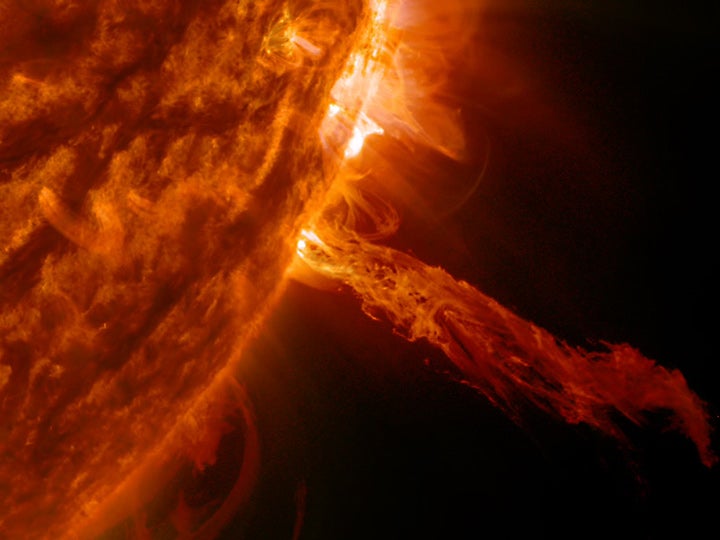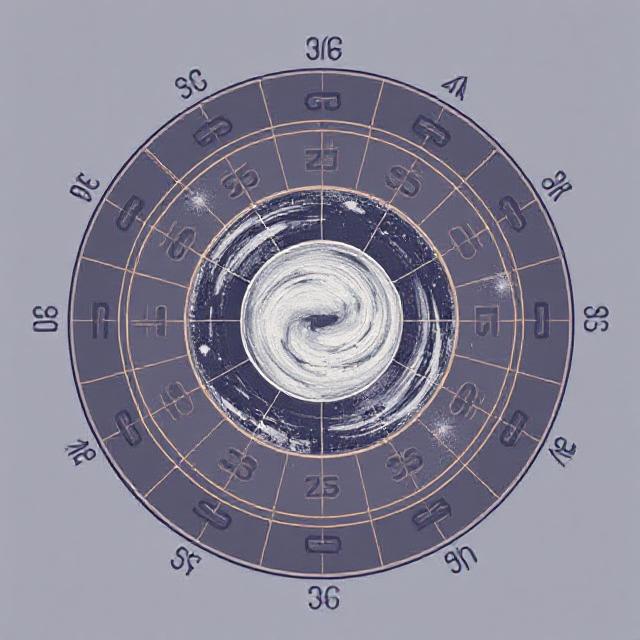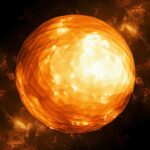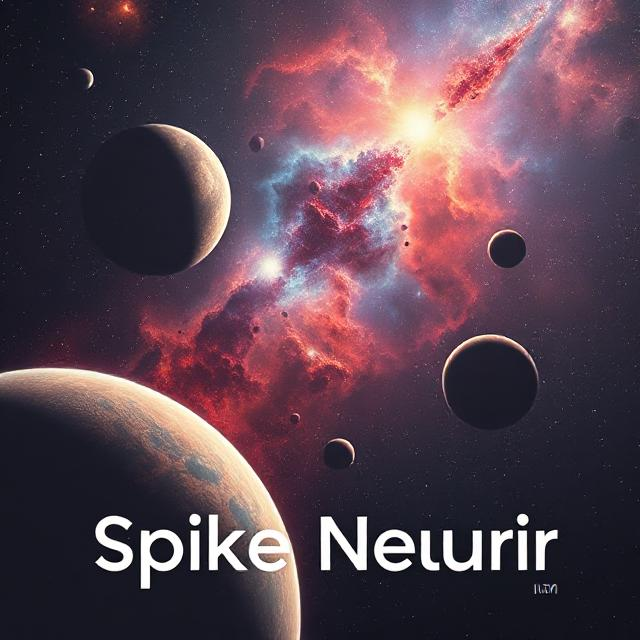Can AI Unlock the Secrets of Solar Storm Prediction?


Understanding the Threat of Solar Storms: The Role of AI in Predicting CMEs
A spectacular eruption of plasma from the Sun as captured by the Solar Dynamics Observatory in 2014. Credit: NASA/Solar Dynamics Observatory
The Carrington Event: A Historical Perspective
On September 1, 1859, Earth experienced the most powerful geomagnetic storm ever documented, known as the Carrington Event. This extraordinary solar phenomenon resulted in telegraph systems igniting and auroras illuminating the skies as far south as the tropics. The event was named after Richard Carrington, an amateur astronomer who identified the significant coronal mass ejection (CME) that triggered these remarkable occurrences.
The Consequences of CMEs
While solar storms can be awe-inspiring, they pose minimal direct risks to human health. However, they can severely disrupt technological systems, particularly electrical grids. CMEs create induced currents that can wreak havoc on these systems. In 1859, Astro Touring was less dependent on electricity, so the Carrington Event caused only minor disruptions.
In contrast, a similar event today would likely have catastrophic consequences. As we approach the next solar maximum—projected for 2025—the potential for geomagnetic storms rises, emphasizing the urgent need for effective prediction and mitigation strategies.
Potential Impacts of Major CMEs


Andy Smith, a Senior Research Fellow at Northumbria University, highlights the various threats posed by significant CMEs:
- Damage to satellites, including increased radiation exposure and risks of deorbiting.
- Disruptions to air travel, especially over polar routes.
- Radio communication failures.
- Severe damage to electrical infrastructure, potentially leading to extensive, prolonged blackouts.
Imagine the chaos that would ensue if power outages prevented access to critical medical devices or disrupted climate control. The fallout from such an event could be devastating, leading to food spoilage, loss of access to banking services, and a breakdown of advanced healthcare.
Harnessing AI for Solar Storm Prediction
Recognizing the gravity of the situation, scientists and institutions are actively researching ways to enhance our capability to forecast CMEs and their consequences. One promising approach involves leveraging artificial intelligence (AI).
According to Smith, AI has the potential to accurately predict both the conditions leading to solar storms and the storms themselves.
NASA’s Role in AI Development
NASA is at the forefront of developing AI technologies for this purpose. Collaborating with the U.S. Geological Survey and the U.S. Department of Energy, NASA has created DAGGER, an AI-based model that can predict geomagnetic disturbances caused by solar activity with a lead time of up to 30 minutes. By analyzing solar wind data from various satellites, DAGGER provides real-time predictions that can help operators of power grids, satellites, and telecommunications prepare for solar storm impacts.
European Initiatives and Machine Learning
In Europe, the Europlanet 2024 Research Infrastructure is leading efforts to enhance planetary science through open access to data from various missions. The Know Center and the Space Research Institute in Graz, Austria, are investigating whether machine learning can effectively forecast solar storm risks. Early results, published in the journal Space Weather, suggest promising potential for future operational forecasting.
Challenges Ahead
Despite the promise of AI in predicting solar storms, the technology is still developing. Machine learning relies heavily on data, and our fortunate avoidance of another Carrington-level event means there’s a lack of historical data for AI to learn from. Mathew Owens, a Professor of Space at the University of Reading, warns that relying solely on data-trained forecasts can be risky, particularly for unprecedented events.
Smith emphasizes the importance of a cautious approach. “AI must demonstrate its reliability compared to existing forecasting methods,” he notes, highlighting concerns over the “black-box” nature of AI models. As mitigation strategies can be costly and complex, having confidence in AI predictions is crucial.
The Future of Solar Storm Preparedness
AI technology is rapidly advancing, and ongoing research aims to enhance our ability to predict and respond to solar storms. Should a CME comparable to the Carrington Event strike, the groundwork laid today will significantly improve our preparedness and response capabilities, turning what was once an unpredictable disaster into a manageable event.
In summary, as we navigate the complexities of our solar environment, integrating advanced technologies like AI into our forecasting strategies is essential for safeguarding our electrical infrastructures and maintaining societal stability.










